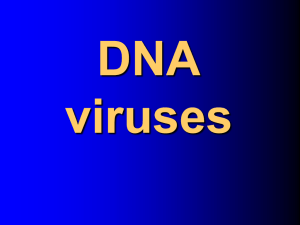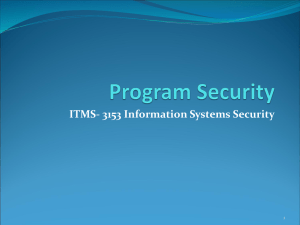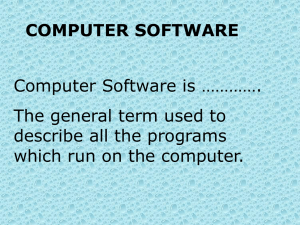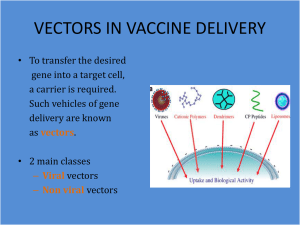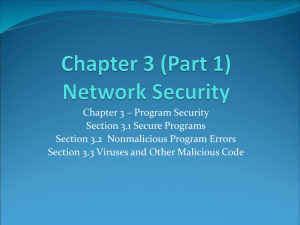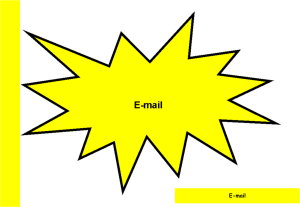Computer Tech "Viruses and Destructive Programs" Powerpoint
advertisement
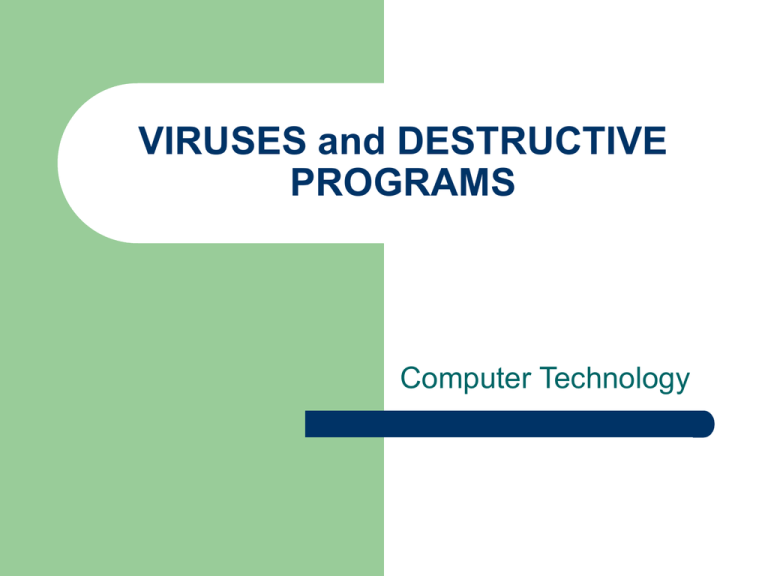
VIRUSES and DESTRUCTIVE PROGRAMS Computer Technology Computer Virus Set of program instructions that attaches itself to a file, reproduces itself, and/or spreads to other files It can – – – – Corrupt files Destroy data Display irritating messages Corrupt computer systems Spreading Viruses Viruses spread because people distribute infected files by exchanging disks and CDs, sending e-mail attachments, and downloading documents from the Internet. Viruses attach themselves to files with .exe, .com, or .vbs filename extensions When you open the infected file, the virus opens and waits to infect the next program you run or disk you use Spreading Viruses (continued) Viruses have the ability to lurk in a computer for days or months, quietly replicating themselves You may not even know your computer has a virus, thus making it easier to spread the virus Trigger Events An event that activates a task often associated with a computer virus Time Bomb – Watches for the PC clock to reach a certain date to activate the virus Example – Michelangelo virus Damages files on March 6 the artist’s birthday Logic Bomb – Watches for a specific set of input to activate the virus Classification of Viruses File Virus Virus that attaches to an application program – Example Chernobyl – Notorious for overwriting a section of the hard disk, making it impossible to access data Boot Sector Virus Infects the system files that your computer uses every time it is turned on Cause widespread damage and recurring problems – Example Stoned Virus – Every time you turn on your computer the virus is activated and infects any non-write-protected files including your hard disk Macro Virus Macro – A miniature program that usually contains legitimate instructions to automate a document or task This virus infects a macro – Example Melissa Virus – Attaches itself to Microsoft Word documents Codemas Virus – Attaches itself to Microsoft Excel spreadsheets Other Viruses Trojan Horse Computer program that seems to perform one function while actually doing something else – Different from a virus because it does not make copies of itself Different tasks that can be affected – – Stealing passwords Deleting files Trojan Horse Example Worm Software program designed to enter a computer system usually through a network, through security holes and then replicate itself Spreads from computer to computer Worm Example Protecting yourself from viruses Antivirus software – – Set of utility programs that looks for and eradicates a wide spectrum of problems, including viruses, Trojan horses, and worms Example McAfee Virus Scan Don’t open e-mails attachments that have strange names or are from people you don’t recognize

